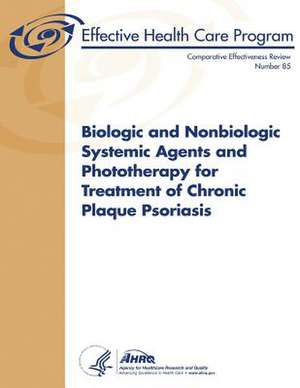Biologic and Nonbiologic Systemic Agents and Phototherapy for Treatment of Chronic Plaque Psoriasis
Autor U. S. Department of Heal Human Services, Agency for Healthcare Resea And Qualityen Limba Engleză Paperback
Preț: 158.78 lei
Preț vechi: 167.14 lei
-5% Nou
Puncte Express: 238
Preț estimativ în valută:
30.38€ • 31.81$ • 25.14£
30.38€ • 31.81$ • 25.14£
Carte disponibilă
Livrare economică 15-29 martie
Preluare comenzi: 021 569.72.76
Specificații
ISBN-13: 9781483925554
ISBN-10: 1483925552
Pagini: 174
Dimensiuni: 216 x 280 x 9 mm
Greutate: 0.42 kg
Editura: CREATESPACE
ISBN-10: 1483925552
Pagini: 174
Dimensiuni: 216 x 280 x 9 mm
Greutate: 0.42 kg
Editura: CREATESPACE
